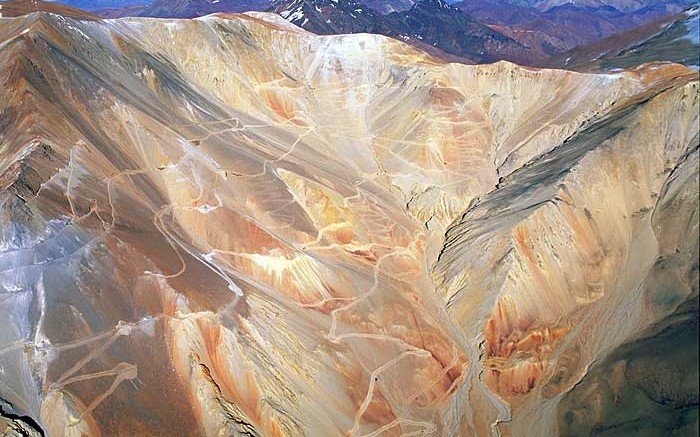Investors are getting tired of complications at Barrick Gold’s (ABX-T, ABX-N) Pascua-Lama gold project, which is perched high up in the Andes, but not so removed from the earthly troubles of cost overruns and environmental challenges.
The latest blow comes courtesy of a Chilean court, which ordered construction on the Chilean portion of the project to stop. Pascua-Lama straddles the border between Chile and Argentina, with most mining to be done on the Chilean side, and processing on the Argentine side.
The news sent Barrick shares to the lowest value they have traded at all year, as the stock was off 9%, or $2.35 on the news, finishing the day in Toronto at $24.81 per share.
The decision to suspend development came after indigenous groups from the surrounding area filed complaints over alleged groundwater contamination. According to Chile’s Radio Cooperativa, the court ruling cited concentrations of arsenic, aluminum, copper and sulphates in groundwater that were above acceptable levels.
While the court decision isn’t good for shareholders, it isn’t clear how bad it is either. There was no word on how long operations would be suspended, and Barrick said it had not received official word from the court about the suspension.
Predictably, the market acted as it does when faced with uncertainty: by selling.
For BMO Capital Markets analyst David Haughton, the situation has created a bit of an opportunity, albeit one with risks.
“The recent market actions have removed nearly one-half of the value of Pascua-Lama from the Barrick share price, which appears to be an overreaction,” Haughton writes in a research note. “The valuation appeal for Barrick has improved, but the elevated execution risk for Pascua-Lama tempers [our] view of the company at this stage.”
BMO maintains its “market perform” rating for Barrick.
Pascua-Lama recently raised eyebrows with rising costs, as Barrick upped its capital expenditure estimate twice last year, with the latest estimate ringing in at a resounding US$8.5 billion. When the green light was initially given on development back in 2009, the mine was expected to cost US$3 billion to build.
Anticipated production has also been revised for the worse, as the company pushed back expected start-up a year to the second half of 2014.
The court ruling is connected to claims brought forth last September and October. It was then that four indigenous communities served Barrick and the local environmental authorities with complaints about the groundwater, blaming degradation on Barrick falling short of environmental regulations.
The groups say environmental authorities had not enforced regulations.
The latest environmental salvo comes years after the project had gathered attention for its proximity to glaciers — a major water source in the area. The company spent considerable time and money mitigating these risks, and the issue has largely receded.
But the Chilean court decision has no effect on construction activities in Argentina. Fortunately for Barrick that is where most of the critical infrastructure is located, including the processing plant and tailings storage facility. Construction largely deals with pre-stripping for the mine area, which lies mainly on the Chilean side.
Barrick is operating the Veladero mine north of Pascua-Lama on the Argentine side of the border. Last year this mine produced 766,000 oz. gold at total cash cost of US$510 per oz. It expects to produce between 570,000 and 610,000 oz. gold this year at cash costs of US$630 to US$670 per oz.
Pascua-Lama is expected to produce between 800,000 and 850,000 oz. gold in its first five years of operation, and could become one of the company’s lowest cash-cost mines once it starts operating.


Be the first to comment on "More trouble at Pascua-Lama"